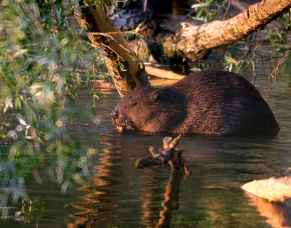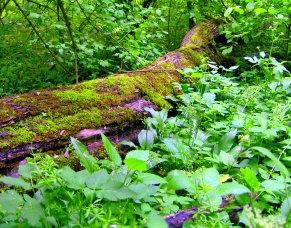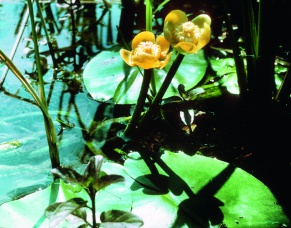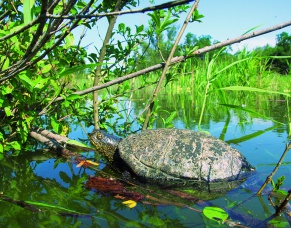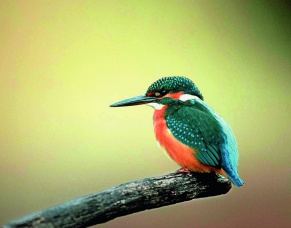Donau-Auen National Park
Home to a enormous variety of species
Nature – flora, fauna, habitats of the Donau-Auen National Park – home to a enormous variety of species
The lifeline of this environment is the Danube. Numerous riparian bodies of water are connected to it depending on water levels. One differentiates between free-flowing side arms and siltified former tributaries. Between these, deep riparian forests may be found. One special aspect is the so-called xeric habitats. Meadows home to a large number of species lie in the middle of forests; some were in fact created by humans centuries ago.
The side arms on the Danube's right bank are a very dynamic sort of waters. Here, the Danube pushes up against the precipice of the Vienna Basin. Rushing water builds vertical bluffs on the overhanging banks which are used above all by kingfishers for brooding. The beaver also prefers to build its dams on these types of embankments. In these flowing waters, aquatic plants are rare. Giant trees felled by floods enrich the habitat; in this type of deadwood, insects find food and shelter; kingfishers and various birds of prey utilise these fallen trees as look-out points.
In contrast to these steep banks, sand and gravel banks are formed on the inner banks in the bends of the river. Pioneer plants such as willow and black poplar have the chance to settle here, as have specialists like the Limosella (mudwort), one of the smallest native flowering plants.
The former tributaries on the Danube's left bank are nearly exclusively waters of the siltation type. The waters of the Danube once flowed through them, but through the relocation of the main river and the Danube regulatory intervention, they have become standing bodies of water with abundant plant growth. Today, the most biodiverse aquatic and marsh plant ecosystem in all of Europe may be found here.
The backwaters are also home to water insects, amphibians, pond turtles and snakes as well as an abundance of fish and water fowl such as the Eurasian Bittern and the Acrocephalus warbler. Typical are the reed beds, fields of nuphars and siltified areas covered in perennial herbs.
Forests along the Danube are categorized in two main groups: softwood riparian forests and hardwood riparian forests. Softwood species such as willow, poplar and alder tolerate the frequent flooding, whereas oak, maple, ash and lime form the hardwood riparian forests. In the riparian forests of the national park, otherwise endangered tree species such as the white willow (Salix alba) and the black poplar (Populus nigra) can often be encountered. There are no longer any forestry activities in the forests of the national park; instead, there are only restoration measures. The only one allowed to fell trees here is the beaver!
Unique plant ecosystems have arisen on the regularly flooded, nutrient-rich riparian meadows. As a consequence, rare animal species such as the Corn Crake have found new habitats to replace those biotopes destroyed by modern agriculture. There are also some extraordinarily dry spots – the so-called xeric habitats. These habitats are savannah-like and shelter very specific types of flora and fauna. The Sea Buckthorn shrub, Stipa grasses and numerous orchid species are characteristic of xeric habitats. Various types of spiders, ground beetles and ants thrive here, and the Praying Mantis can also be spotted on grass blades, lying in wait for its prey.

